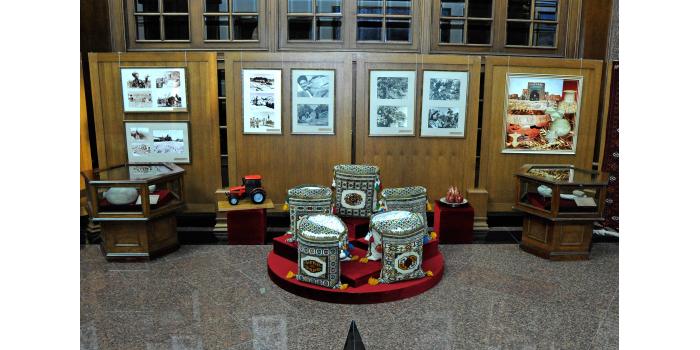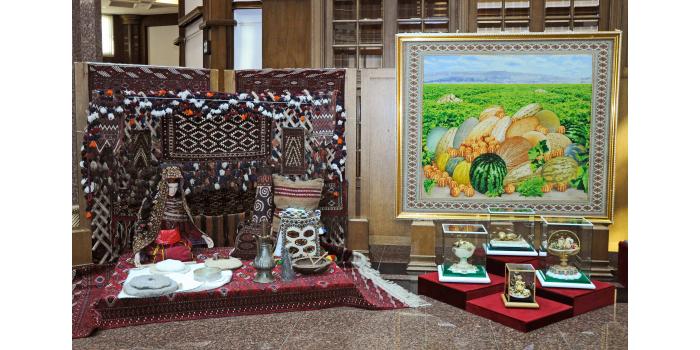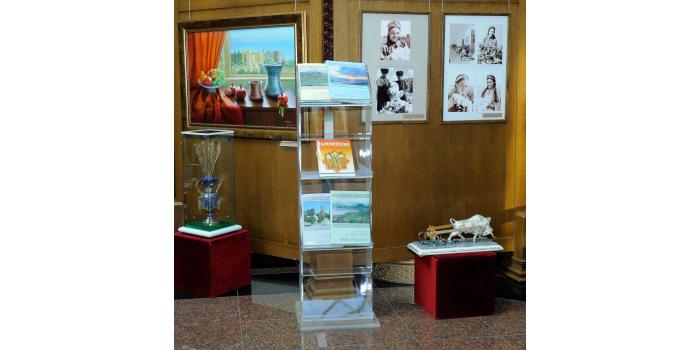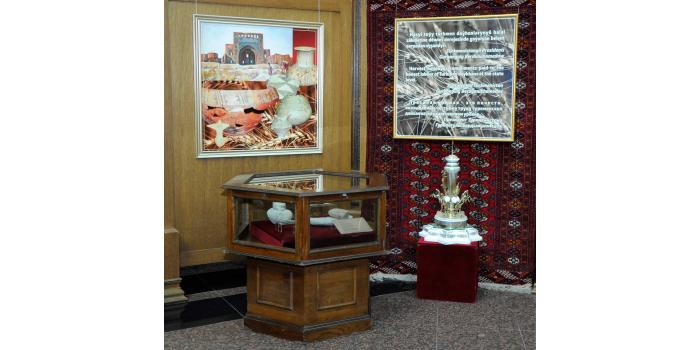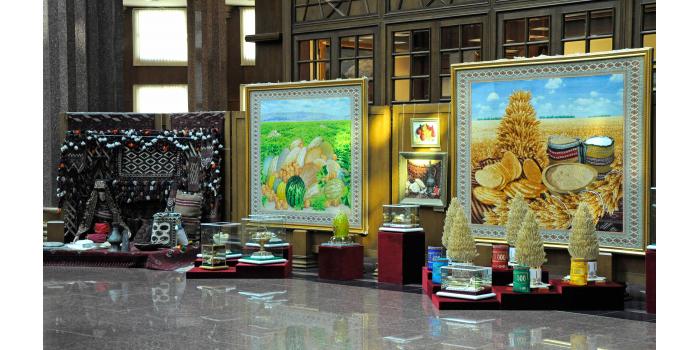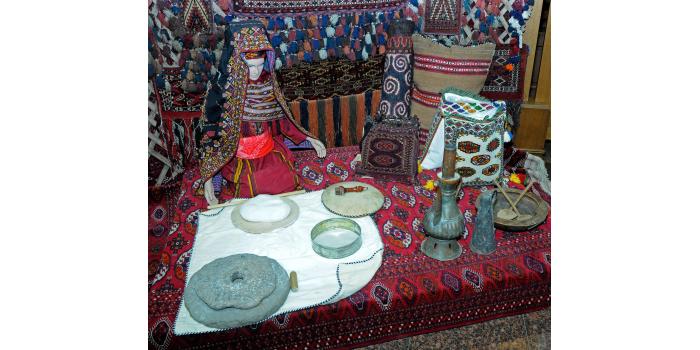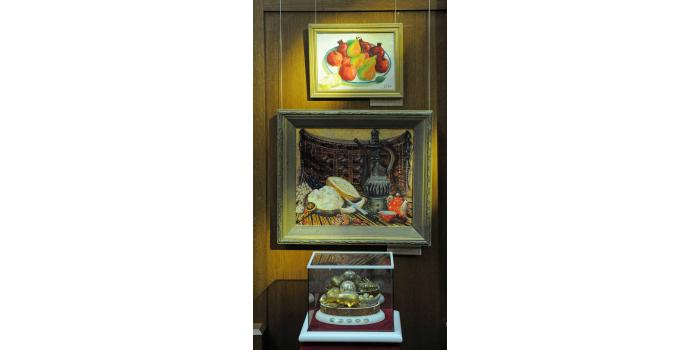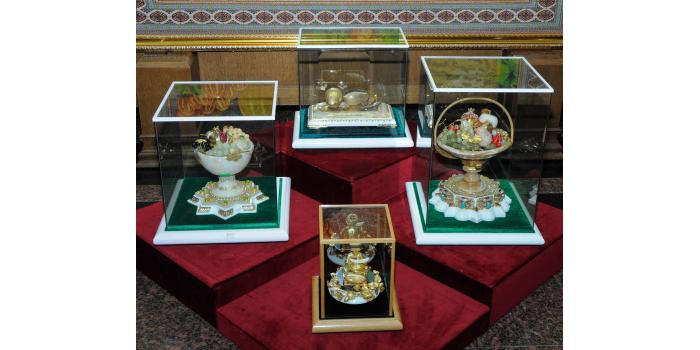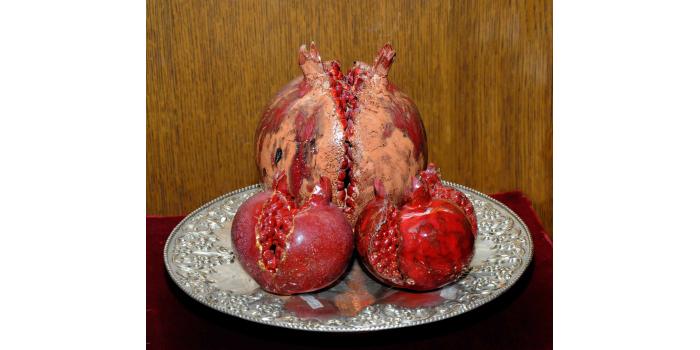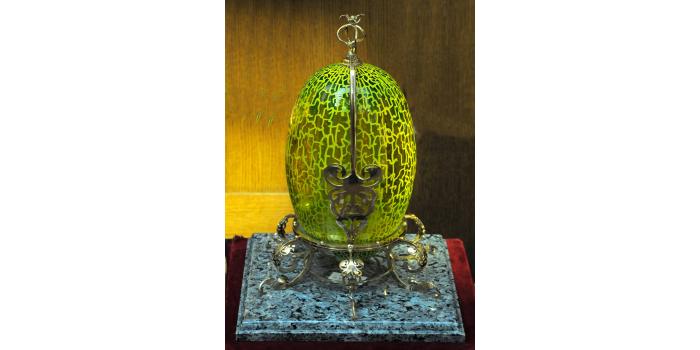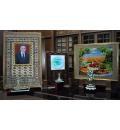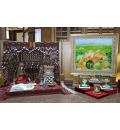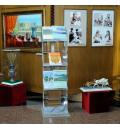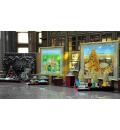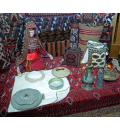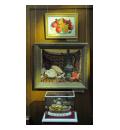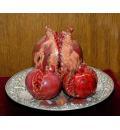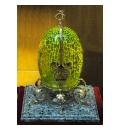Primary tabs
In November at the State museum of the State cultural centre of Turkmenistan was also organized an exhibition «The abundance of Turkmen land» devoted to harvest holiday.
The exhibition is divided into three sections. The first section is devoted to the history of development of agriculture in our country. Revealing of first signs of settled agriculture in the Central Asia in the northwest of Ashgabat near Jeytun village is the important historical event. Archaeological finds found from ancient agricultural settlements, such as querns, a mortar with pestle, sickles, woman’s figurines as the symbol of fertility and object of worship of farmers are presented in the first section of the exhibition. Here you may see a valuable exhibit - Imprints of grain of white wheat on gypsum. As a result of excavation under the guidance of the American scientific R.Pampelli in 1904 on hills of Anau have been found grains of white wheat, which concerning the fourth millenium B.C. This is the reason that the Turkmen earth is considered to be the home of white wheat. In the first section are presented medieval labour tools and exhibits concerning agriculture.
The second section is devoted to development of agriculture in Turkmenistan in 30-50-th of the ХХ century. In photos of those yearsare reflected the first tractor, harvesting, selfless labour of rural workers, a cotton field, collectors of cotton. Also here is shown the Turkmen yurta. You can see here articles of everyday life: hand mill, a sieve, bags for grain, wooden tableware.
The final part is devoted to the achievements in agriculture during the days of Independence of our country. Here are exhibited works of artists, picture carpets saddle bags with cotton, sheaves of white wheat, the jewellery compositions personifying food abundance of the Turkmen people. The exhibition is finished by watermelons, melons and gourds, vegetables and fruits of autumn crop.



